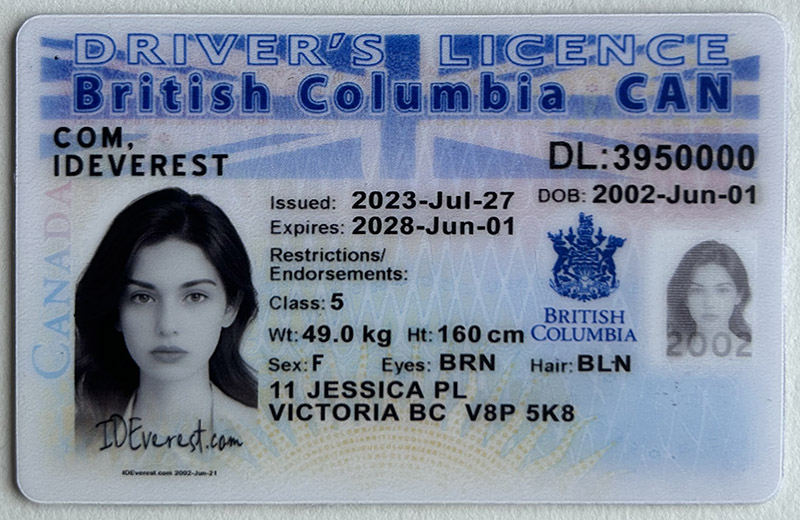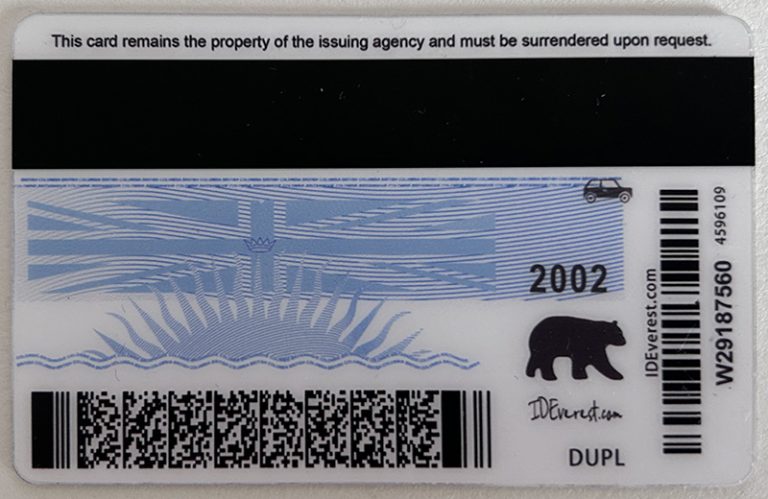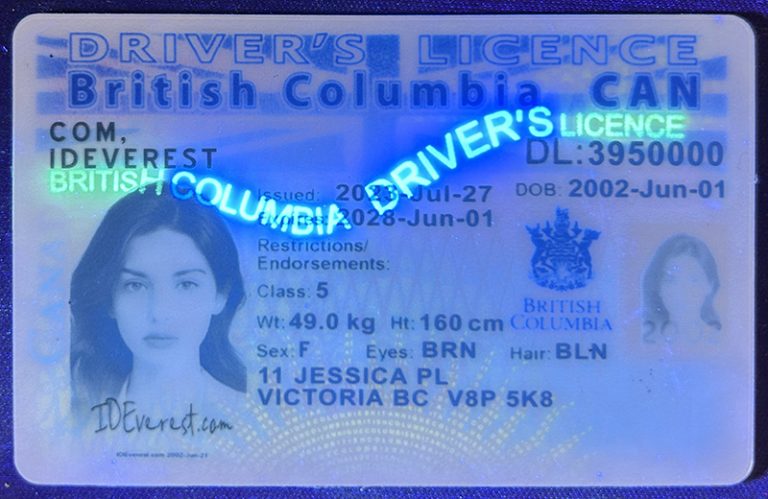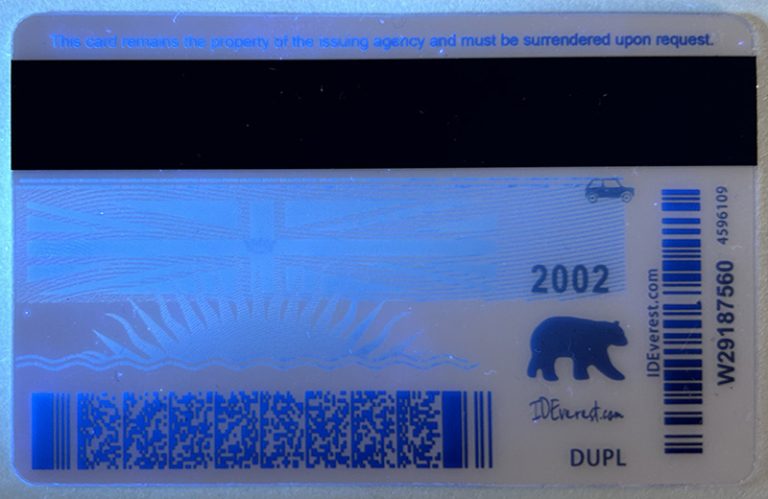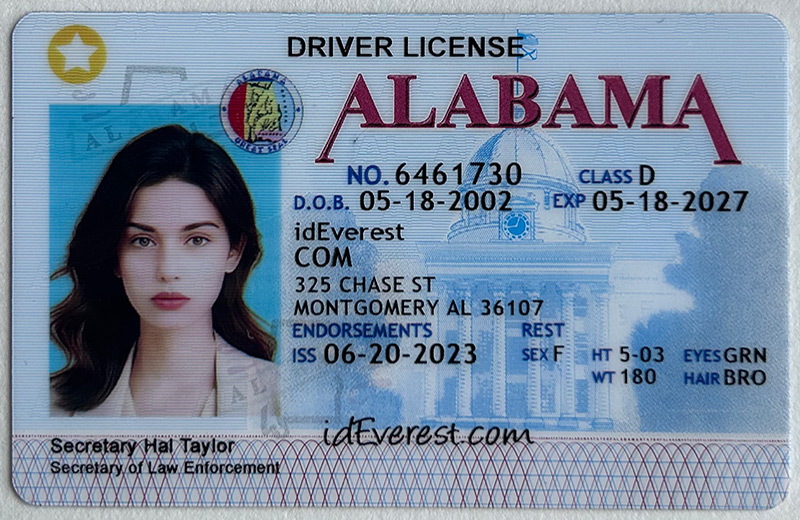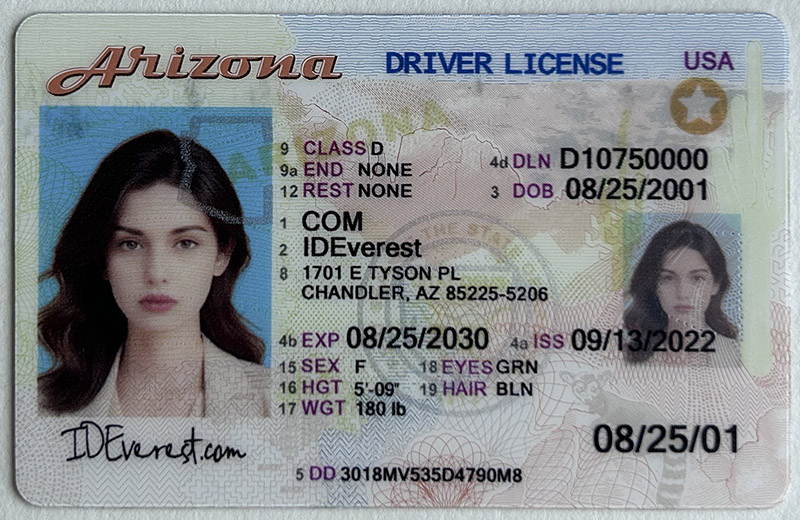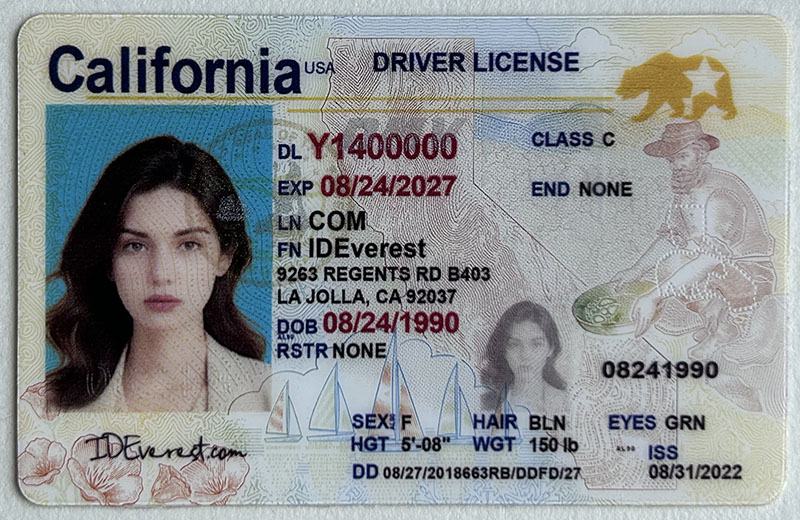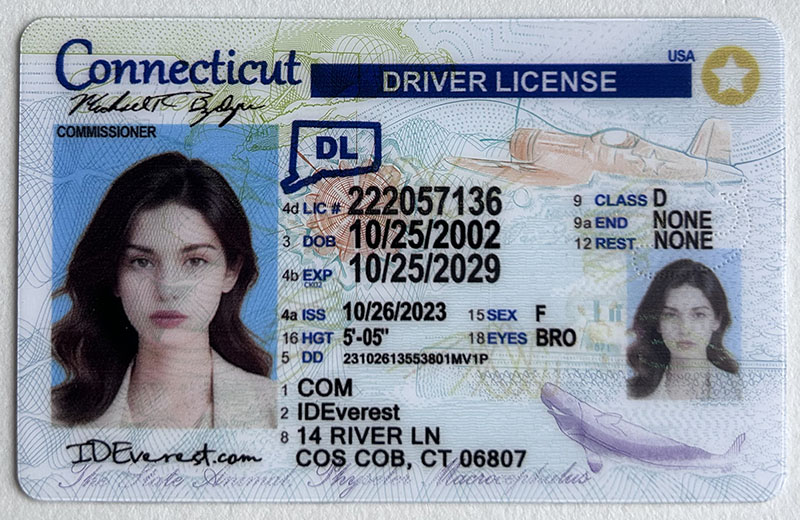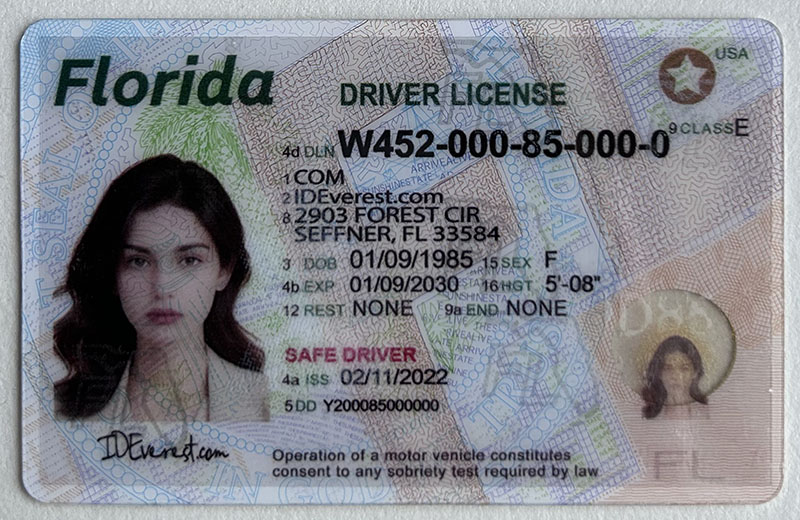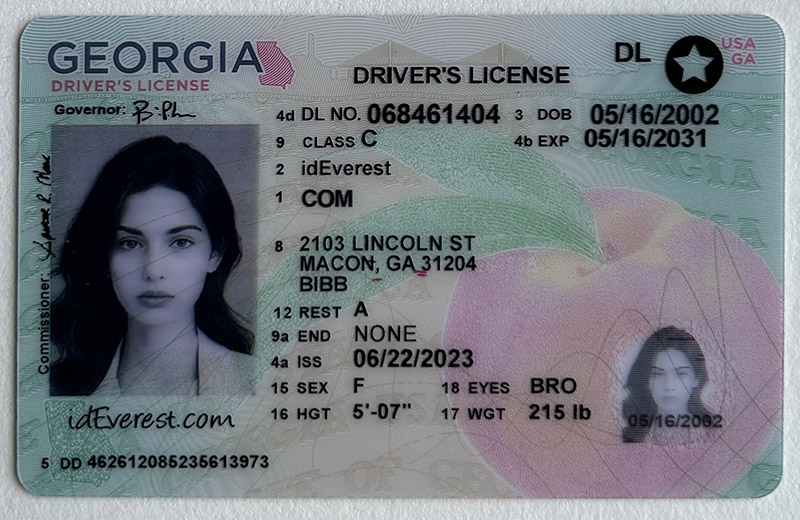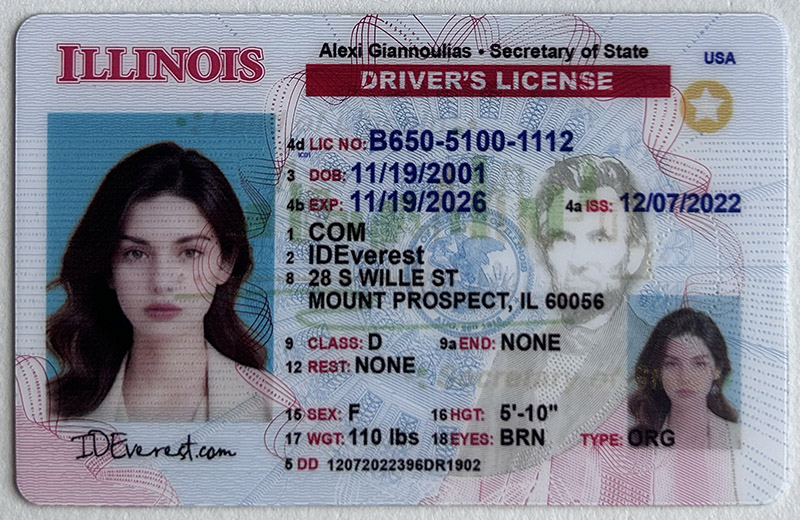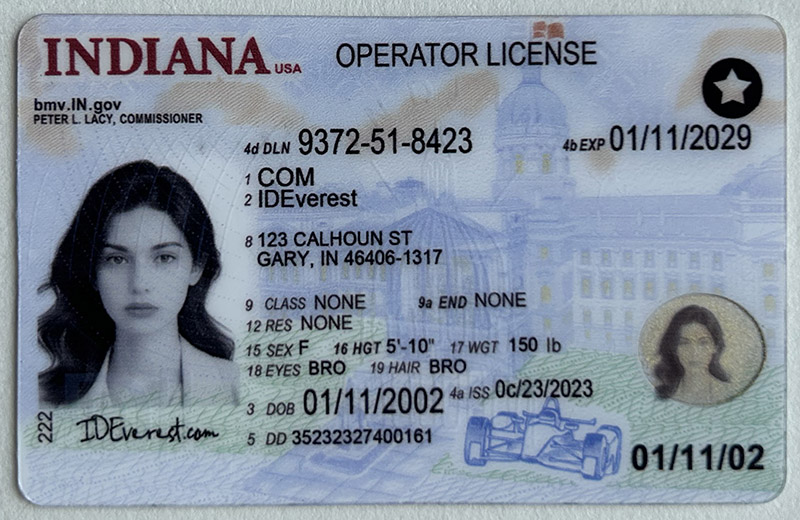British Columbia Fake ID
Outline
- H1: Introduction
- H2: Overview of the Topic
- H2: Why Fake IDs Are a Concern in British Columbia
- H1: The Prevalence of Fake IDs in British Columbia
- H2: Statistics and Studies
- H3: Age Groups Most Involved
- H3: Common Venues and Situations Where Fake IDs Are Used
- H1: Reasons for Using Fake IDs
- H2: Underage Drinking
- H3: Access to Clubs and Bars
- H3: Purchasing Age-Restricted Items
- H2: The Desire for a False Identity
- H1: The Consequences of Using Fake IDs
- H2: Legal Penalties
- H3: Fines and Imprisonment
- H3: Criminal Record and Future Impact
- H2: Social and Ethical Implications
- H3: Impact on Trust and Reputation
- H3: Ethical Considerations in Society
- H1: How Fake IDs Are Made
- H2: Methods of Fabrication
- H3: Technology and Equipment Used
- H3: The Role of Online Marketplaces
- H2: The Challenges of Detection
- H3: Advanced Security Features
- H3: Training for Bouncers and Retailers
- H1: Efforts to Combat Fake IDs in British Columbia
- H2: Government Regulations and Laws
- H3: Recent Legislative Changes
- H3: Enforcement Strategies
- H2: Collaboration Between Authorities and Businesses
- H3: Training Programs
- H3: Technology Solutions
- H1: The Role of Education and Awareness
- H2: Educating Youth About the Risks
- H2: Public Awareness Campaigns
- H3: Community Involvement
- H3: Success Stories from Initiatives
- H1: The Future of Fake IDs in British Columbia
- H2: Potential Changes in Technology
- H2: Predictions for Law Enforcement and Legislation
- H3: Long-term Effects on Society
- H1: Conclusion
- H2: Summary of Key Points
- H2: Final Thoughts on Combatting Fake IDs
- H1: FAQs
- H2: What happens if you're caught with a fake ID in British Columbia?
- H2: How can businesses identify a fake ID?
- H2: Are there any legal ways to change your identity in British Columbia?
- H2: What are the most common types of fake IDs in British Columbia?
- H2: How can I report someone using a fake ID?
British Columbia Fake ID
Introduction
In the scenic province of British Columbia, the issue of fake IDs has become a pressing concern. From underage individuals seeking entry into bars and clubs to those looking to purchase age-restricted items, the use of fake IDs is not only widespread but also carries significant legal and social consequences. In this article, we'll dive deep into the world of fake IDs in British Columbia, exploring their prevalence, reasons for use, consequences, and the ongoing efforts to combat this issue.
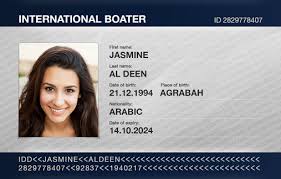
The Prevalence of Fake IDs in British Columbia
When it comes to the prevalence of fake IDs in British Columbia, the numbers are concerning. Studies suggest that a significant portion of underage youth have attempted to use or possess a fake ID at least once. According to recent data, nearly 30% of teenagers in certain urban areas have admitted to using a fake ID. This trend is particularly prevalent among those aged 16 to 20, with the use of fake IDs peaking during the late teenage years.
Age Groups Most Involved
The majority of fake ID users are high school and college students. The desire to engage in adult activities, such as purchasing alcohol or entering nightclubs, drives many young people to obtain fake IDs. This demographic is particularly susceptible due to peer pressure and the perceived social benefits of being able to participate in age-restricted activities.
Common Venues and Situations Where Fake IDs Are Used
Fake IDs are most commonly used in nightclubs, bars, and liquor stores, where age restrictions are strictly enforced. However, they are also used in other scenarios, such as purchasing tobacco products, renting vehicles, and even gaining entry to certain events that have age limits. The widespread availability of these IDs through online platforms has only exacerbated the problem, making it easier than ever for underage individuals to access them.
Reasons for Using Fake IDs
The motivations behind using fake IDs are varied, but they generally revolve around the desire to circumvent age restrictions.
Underage Drinking
One of the primary reasons for obtaining a fake ID is to purchase alcohol. In British Columbia, the legal drinking age is 19, which many high school and college students find restrictive. With a fake ID, they can easily purchase alcohol from stores or gain entry into bars and clubs where they can drink without legal repercussions.
Access to Clubs and Bars
Aside from alcohol, the social aspect of clubbing is a major draw for young people. Being able to enter a nightclub with friends is seen as a rite of passage, and those who are underage often feel left out. A fake ID provides the key to this social world, allowing them to join in on the fun without having to wait until they reach the legal age.
Purchasing Age-Restricted Items
Fake IDs are also used to buy items like cigarettes, vaping products, and lottery tickets. These are items that require proof of age, and without a valid ID, underage individuals would be unable to make such purchases. The ease of obtaining a fake ID online has made it possible for these individuals to bypass these restrictions with minimal effort.
The Desire for a False Identity
In some cases, the use of a fake ID goes beyond simply wanting to buy alcohol or enter a club. For some, it’s about adopting a completely new persona. This can be particularly appealing to those who feel restricted by their current identity or who are looking to escape from personal issues. A fake ID offers them a chance to reinvent themselves, even if only temporarily.
The Consequences of Using Fake IDs
While using a fake ID might seem like a harmless act, the consequences can be severe.
Legal Penalties
In British Columbia, the use of a fake ID is a criminal offense. Those caught using or possessing a fake ID can face serious legal consequences.
Fines and Imprisonment
If caught, individuals can be fined up to $200 and may also face imprisonment for up to six months. In addition, they could be required to appear in court, which could result in further legal costs and the possibility of a more severe sentence.
Criminal Record and Future Impact
A conviction for using a fake ID can lead to a permanent criminal record. This can have a significant impact on future opportunities, including education, employment, and travel. For example, many employers conduct background checks, and a criminal record could disqualify an applicant from consideration. Furthermore, certain countries may deny entry to individuals with a criminal record, limiting travel options.
Social and Ethical Implications
Beyond the legal consequences, there are also social and ethical considerations to take into account.
Impact on Trust and Reputation
Using a fake ID can damage personal relationships and harm one’s reputation. If friends, family, or colleagues discover that someone has been using a fake ID, it can lead to a loss of trust. This can have long-lasting effects on personal and professional relationships.
Ethical Considerations in Society
On a broader scale, the use of fake IDs raises ethical questions about honesty and integrity. By using a fake ID, individuals are essentially lying about their identity, which can contribute to a culture of dishonesty. This can have ripple effects in society, leading to a general decline in trust and ethical standards.
How Fake IDs Are Made
The process of creating a fake ID has become increasingly sophisticated, thanks to advancements in technology.
Methods of Fabrication
Fake IDs can be made using a variety of methods, ranging from simple DIY kits to highly advanced techniques that involve specialized equipment.
Technology and Equipment Used
Some of the most common methods include using high-quality printers, holographic overlays, and even scanning real IDs to create replicas. The use of 3D printers has also become more common, allowing for the creation of IDs that closely mimic the texture and feel of a genuine ID. Additionally, some forgers use software to generate fake barcodes and magnetic strips that can pass a quick scan, making detection even more challenging.
The Role of Online Marketplaces
The internet has made it easier than ever to obtain a fake ID. Numerous websites offer custom fake IDs for a fee, often promising fast shipping and high-quality products. These sites typically operate in a gray area of the law, making them difficult to shut down. Moreover, the anonymity provided by the internet allows for transactions to be conducted without fear of being caught.
The Challenges of Detection
As fake IDs become more sophisticated, the challenge of detecting them increases.
Advanced Security Features
To combat the rise of fake IDs, authorities have implemented advanced security features on genuine IDs, such as holograms, UV ink, and microprinting. However, forgers have also become adept at replicating these features, making it difficult to distinguish between a real and a fake ID at a glance.
Training for Bouncers and Retailers
Due to the complexity of detecting fake IDs, bouncers, and retailers often receive specialized training. This training focuses on identifying subtle differences between real and fake IDs, such as discrepancies in the font, size, or alignment of text. However, even with training, it can be challenging to catch every fake ID, particularly in a busy environment.
Efforts to Combat Fake IDs in British Columbia
Recognizing the growing problem of fake IDs, authorities in British Columbia have taken several steps to address the issue.
Government Regulations and Laws
The government has implemented strict regulations and laws to deter the use of fake IDs.
Recent Legislative Changes
In recent years, there have been several legislative changes aimed at cracking down on the production and use of fake IDs. These changes include harsher penalties for those caught with a fake ID and increased funding for law enforcement agencies tasked with combatting this issue.
Enforcement Strategies
Law enforcement agencies have also ramped up their efforts to combat fake IDs. This includes conducting regular sting operations at venues known for serving underage patrons and collaborating with other agencies to track down and shut down online marketplaces selling fake IDs.
Collaboration Between Authorities and Businesses
To effectively combat the use of fake IDs, there has been a growing collaboration between authorities and businesses.
Training Programs
Many businesses have implemented training programs for their staff to help them identify fake IDs. These programs often involve working with local law enforcement to provide staff with the tools and knowledge they need to spot a fake ID. This collaboration has been crucial in reducing the number of fake IDs being used in venues across the province.
Technology Solutions
In addition to training, businesses are also turning to technology to help detect fake IDs. This includes the use of ID scanners that can quickly verify the authenticity of an ID by checking its barcode or magnetic strip against a database of valid IDs. While not foolproof, these scanners provide an additional layer of security and can help deter the use of fake IDs.
The Role of Education and Awareness
Education and awareness are key components in the fight against fake IDs.
Educating Youth About the Risks
Schools and community organizations have begun to implement programs aimed at educating young people about the risks and consequences of using a fake ID. These programs often involve guest speakers, such as law enforcement officers or former offenders, who share their experiences and emphasize the long-term impact of using a fake ID.
Public Awareness Campaigns
Public awareness campaigns have also been launched to inform the general public about the issue of fake IDs. These campaigns often use social media, posters, and public service announcements to spread the message that using a fake ID is not worth the risk. By raising awareness, these campaigns aim to reduce the demand for fake IDs and encourage people to make responsible choices.
Community Involvement
Community involvement is another important aspect of these campaigns. By engaging with local communities, authorities can build a network of support to help identify and report the use of fake IDs. This collaborative approach has been effective in reducing the prevalence of fake IDs in certain areas of British Columbia.
Success Stories from Initiatives
There have been several success stories from these initiatives, with some communities seeing a significant decrease in the use of fake IDs. These success stories serve as a reminder that, with the right combination of education, enforcement, and community support, it is possible to combat the issue of fake IDs.
The Future of Fake IDs in British Columbia
As technology continues to evolve, so too will the methods used to create and detect fake IDs.
Potential Changes in Technology
We can expect to see further advancements in the technology used to create fake IDs, making them even more difficult to detect. However, this also means that the technology used to combat fake IDs will need to keep pace. This could involve the development of more sophisticated ID scanners or the implementation of new security features that are harder to replicate.
Predictions for Law Enforcement and Legislation
In terms of law enforcement and legislation, we can expect to see stricter laws and more aggressive enforcement strategies in the future. This could include harsher penalties for those caught with a fake ID, as well as increased efforts to shut down online marketplaces. Additionally, there may be more collaboration between different provinces and even countries to address the global nature of the fake ID market.
Long-term Effects on Society
In the long term, the issue of fake IDs could have a lasting impact on society. If left unchecked, it could lead to a culture of dishonesty and a breakdown in trust. However, with continued efforts to combat the use of fake IDs, it is possible to mitigate these effects and create a safer, more honest society.
Conclusion
The issue of fake IDs in British Columbia is a complex and evolving problem. While the use of fake IDs may seem like a minor offense, it carries significant legal and social consequences. Through a combination of education, enforcement, and community involvement, it is possible to reduce the prevalence of fake IDs and ensure a safer environment for everyone.
FAQs
What happens if you're caught with a fake ID in British Columbia?
If you're caught with a fake ID in British Columbia, you can face legal penalties including fines, imprisonment, and a criminal record. These consequences can have a long-lasting impact on your future opportunities.
How can businesses identify a fake ID?
Businesses can identify a fake ID by training their staff to spot subtle differences, using ID scanners, and staying informed about the latest security features on genuine IDs.
Are there any legal ways to change your identity in British Columbia?
Yes, there are legal ways to change your identity in British Columbia, such as through a legal name change or by applying for a new identification document under special circumstances. However, this process is regulated and requires proper documentation and approval.
What are the most common types of fake IDs in British Columbia?
The most common types of fake IDs in British Columbia include driver's licenses, provincial ID cards, and student IDs. These are often obtained through online marketplaces or fabricated using advanced printing technologies.
How can I report someone using a fake ID?
If you suspect someone is using a fake ID, you can report it to the local authorities or the establishment where the ID is being used. Many businesses have protocols in place for handling such situations, and your report can help prevent illegal activity.
提纲
H1:介绍
H2:主题概述
H2:为何假身份证在不列颠哥伦比亚省令人担忧
H1:不列颠哥伦比亚省假身份证的普遍性
H2:统计数据和研究
H3:涉及最多的年龄组
H3:使用假身份证的常见场所和情况
H1:使用假身份证的原因
H2:未成年人饮酒
H3:进入俱乐部和酒吧
H3:购买有年龄限制的物品
H2:对虚假身份的渴望
H1:使用假身份证的后果
H2:法律处罚
H3:罚款和监禁
H3:犯罪记录和未来影响
H2:社会和道德影响
H3:对信任和声誉的影响
H3:社会中的道德考虑
H1:如何制作假身份证
H2:制作假身份证的方法伪造
H3:所用技术和设备
H3:在线市场的作用
H2:检测的挑战
H3:高级安全功能
H3:保镖和零售商的培训
H1:不列颠哥伦比亚省打击假身份证的努力
H2:政府法规和法律
H3:最近的立法变化
H3:执法策略
H2:当局和企业之间的合作
H3:培训计划
H3:技术解决方案
H1:教育和意识的作用
H2:教育青少年了解风险
H2:公众意识运动
H3:社区参与
H3:倡议的成功案例
H1:不列颠哥伦比亚省假身份证的未来
H2:技术的潜在变化
H2:执法和立法预测
H3:对社会的长期影响
H1:结论
H2:要点总结
H2:最后的想法关于打击假身份证
H1:常见问题解答
H2:如果您在不列颠哥伦比亚省被发现持有假身份证会怎样?
H2:企业如何识别假身份证?
H2:在不列颠哥伦比亚省,有没有什么合法的方法可以更改您的身份?
H2:不列颠哥伦比亚省最常见的假身份证类型有哪些?
H2:如何举报使用假身份证的人?
不列颠哥伦比亚省假身份证
简介
在风景秀丽的不列颠哥伦比亚省,假身份证问题已成为一个迫切的问题。从想进入酒吧和俱乐部的未成年人到想购买有年龄限制的物品的人,使用假身份证不仅很普遍,而且还会带来重大的法律和社会后果。在本文中,我们将深入探讨不列颠哥伦比亚省的假身份证世界,探讨它们的普遍性、使用原因、后果以及打击这一问题的持续努力。
不列颠哥伦比亚省假身份证的普遍性
说到不列颠哥伦比亚省假身份证的普遍性,这些数字令人担忧。研究表明,相当一部分未成年人至少尝试过一次使用或持有假身份证。根据最近的数据,某些城市地区近 30% 的青少年承认使用过假身份证。这种趋势在 16 至 20 岁的人群中尤为普遍,使用假身份证的现象在青少年晚期达到顶峰。
最常涉足的年龄组
大多数假身份证使用者是高中生和大学生。许多年轻人渴望参与成人活动,例如购买酒精或进入夜总会,因此会获取假身份证。由于同龄人的压力以及能够参与年龄限制活动的社会利益,这一人群特别容易受到影响。
假身份证的常见场所和情况
假身份证最常用于严格执行年龄限制的夜总会、酒吧和酒类商店。但是,它们也用于其他场景,例如购买烟草产品、租车,甚至进入某些有年龄限制的活动。这些身份证件通过网络平台广泛流通,只会加剧这一问题,使未成年人比以往更容易获得这些身份证件。
使用假身份证件的原因
使用假身份证件的动机多种多样,但一般都是为了规避年龄限制。
未成年人饮酒
获得假身份证件的主要原因之一是购买酒精。在不列颠哥伦比亚省,法定饮酒年龄为 19 岁,许多高中生和大学生认为这个年龄太过严格。有了假身份证件,他们可以轻松地从商店购买酒精,或进入酒吧和俱乐部,在那里喝酒不会受到法律制裁。
进入俱乐部和酒吧
除了酒精之外,夜店的社交性也是吸引年轻人的一大因素。能够和朋友一起进入夜店被视为一种成人仪式,未成年人常常感到被排斥。假身份证件是进入这个社交世界的钥匙,让他们无需等到法定年龄就可以加入其中享受乐趣。
购买有年龄限制的物品
假身份证还用于购买香烟、电子烟产品和彩票等物品。这些物品需要年龄证明,如果没有有效身份证件,未成年人将无法进行此类购买。网上获取假身份证的便利性使这些人能够以最小的努力绕过这些限制。
对虚假身份的渴望
在某些情况下,使用假身份证不仅仅是想买酒或进入俱乐部。对一些人来说,这是为了接受一个全新的角色。这对那些感到被当前身份束缚或想逃避个人问题的人来说尤其有吸引力。假身份证为他们提供了一个重塑自我的机会,即使只是暂时的。
使用假身份证的后果
虽然使用假身份证似乎是一种无害的行为,但后果可能很严重。
法律处罚
在不列颠哥伦比亚省,使用假身份证是刑事犯罪。被发现使用或持有假身份证的人将面临严重的法律后果。
罚款和监禁
如果被抓获,个人最高可被罚款 200 美元,并可能面临最高六个月的监禁。此外,他们可能被要求出庭,这可能会导致进一步的法律费用和更严厉的刑罚。
犯罪记录和未来影响
因使用假身份证而被定罪可能会导致永久的犯罪记录。这可能会对未来的机会产生重大影响,包括教育、就业和旅行。例如,许多雇主会进行背景调查,犯罪记录可能会使申请人失去考虑资格。此外,某些国家可能会拒绝有犯罪记录的个人入境,限制旅行选择。
社会和道德影响
除了法律后果之外,还需要考虑社会和道德问题。
对信任和声誉的影响
使用假身份证会损害人际关系并损害一个人的声誉。如果朋友、家人或同事发现某人使用假身份证,则会导致信任丧失。这可能会对个人和职业关系产生长期影响。
社会道德考量
从更广泛的角度来看,使用假身份证引发了关于诚实和正直的道德问题。通过使用假身份证,个人本质上是在撒谎,这可能会导致不诚实的文化。这可能会对社会产生连锁反应,导致信任和道德标准的普遍下降。
如何制作假身份证
由于技术的进步,制作假身份证的过程变得越来越复杂。
制作方法
假身份证可以使用多种方法制作,从简单的 DIY 套件到涉及专用设备的非常先进的技术。
使用的技术和设备
一些最常见的方法包括使用高质量打印机、全息覆盖,甚至扫描真实身份证来创建复制品。 3D 打印机的使用也变得越来越普遍,可以制作出与真身份证的质感和手感非常相似的身份证。此外,一些伪造者使用软件生成可以通过快速扫描的假条形码和磁条,使检测更加困难。
在线市场的作用
互联网使获取假身份证变得比以往任何时候都容易。许多网站提供收费的定制假身份证,通常承诺快速发货和高质量产品。这些网站通常在法律的灰色地带运营,因此很难关闭。此外,互联网提供的匿名性使交易可以进行而不必担心被抓住。
检测挑战
随着假身份证越来越复杂,检测它们的挑战也越来越大。
高级安全功能
为了打击假身份证的兴起,当局在真身份证上实施了高级安全功能,例如全息图、紫外线墨水和微缩印刷。然而,伪造者也已经熟练地复制这些功能,使得很难一眼就区分真假身份证。
保镖和零售商的培训
由于检测假身份证的复杂性,保镖和零售商通常会接受专门的培训。这种培训侧重于识别真假身份证之间的细微差别,例如字体、大小或文本对齐方式的差异。然而,即使经过培训,要发现每一个假身份证也非常困难,尤其是在繁忙的环境中。
不列颠哥伦比亚省打击假身份证的努力
不列颠哥伦比亚省的当局认识到假身份证问题日益严重,已采取多项措施来解决这一问题。
政府法规和法律
政府实施了严格的法规和法律,以阻止使用假身份证。
最近的立法变化
近年来,已经有多项立法变化旨在打击制造和使用假身份证的行为。这些变化包括对被发现持有假身份证的人处以更严厉的惩罚,并增加负责打击这一问题的执法机构的资金。
执法策略
执法机构也加大了打击假身份证的力度。这包括在以服务未成年人而闻名的场所定期开展诱捕行动,并与其他机构合作,追查和关闭销售假身份证的在线市场。
当局和企业之间的合作
为了有效打击使用假身份证的行为,当局和企业之间的合作日益增多。
培训计划
许多企业已经为员工实施了培训计划,帮助他们识别假身份证。这些计划通常涉及与当地执法部门合作,为员工提供识别假身份证所需的工具和知识。此次合作对于减少全省场馆使用的假身份证数量至关重要。
技术解决方案
除了培训之外,企业还在利用技术来帮助检测假身份证。这包括使用身份证扫描仪,可以通过将条形码或磁条与有效身份证数据库进行比对,快速验证身份证的真实性。虽然这些扫描仪并非万无一失,但它们提供了额外的安全保障,有助于阻止使用假身份证。
教育和意识的作用
教育和意识是打击假身份证的关键要素。
让年轻人了解风险
学校和社区组织已开始实施旨在教育年轻人使用假身份证的风险和后果的计划。这些计划通常邀请嘉宾发言,例如执法人员或前罪犯,他们分享自己的经验并强调使用假身份证的长期影响。
公众意识运动
还发起了公众意识运动,以向公众宣传假身份证问题。这些活动通常使用社交媒体、海报和公益广告来传播这样的信息:使用假身份证不值得冒这个险。通过提高人们的认识,这些活动旨在减少对假身份证的需求,并鼓励人们做出负责任的选择。
社区参与
社区参与是这些活动的另一个重要方面。通过与当地社区合作,当局可以建立一个支持网络,帮助识别和举报使用假身份证的情况。这种协作方式有效地减少了不列颠哥伦比亚省某些地区的假身份证泛滥。
举措的成功案例
这些举措取得了一些成功,一些社区的假身份证使用量显著减少。这些成功案例提醒我们,只要正确结合教育、执法和社区支持,就有可能打击假身份证问题。
不列颠哥伦比亚省假身份证的未来
随着技术的不断发展,用于制作和检测假身份证的方法也将不断发展。
技术的潜在变化
我们可以期待看到用于制作假身份证的技术进一步进步,使它们更难被发现。然而,这也意味着用于打击假身份证的技术需要跟上步伐。这可能涉及开发更复杂的身份证扫描仪或实施更难复制的新安全功能。
执法和立法预测
在执法和立法方面,我们可以预期未来会出现更严格的法律和更积极的执法策略。这可能包括对被发现持有假身份证的人处以更严厉的惩罚,以及加大关闭在线市场的力度。此外,不同省份甚至国家之间可能会进行更多合作,以解决假身份证市场的全球性问题。
对社会的长期影响
从长远来看,假身份证问题可能会对社会产生持久影响。如果不加以控制,它可能会导致不诚实的文化和信任的崩溃。然而,随着打击假身份证使用的持续努力,有可能减轻这些影响并创建一个更安全、更诚实的社会。
结论
不列颠哥伦比亚省的假身份证问题是一个复杂且不断发展的问题。虽然使用假身份证似乎是一种轻微的违法行为,但它会带来严重的法律和社会后果。通过教育、执法和社区参与相结合的方式,可以减少假身份证的泛滥,确保每个人都能拥有更安全的环境。
常见问题解答
如果您在英属哥伦比亚被发现持有假身份证,会发生什么?
如果您在英属哥伦比亚被发现持有假身份证,您可能会面临法律处罚,包括罚款、监禁和犯罪记录。这些后果可能会对您未来的机会产生长期影响。
企业如何识别假身份证?
企业可以通过培训员工发现细微差别、使用身份证扫描仪以及随时了解真实身份证的最新安全功能来识别假身份证。
在英属哥伦比亚,有合法的方式可以更改您的身份吗?
是的,在英属哥伦比亚,有合法的方式可以更改您的身份,例如通过合法的姓名更改或在特殊情况下申请新的身份证件。但是,此过程受到监管,需要适当的文件和批准。
在英属哥伦比亚,最常见的假身份证类型有哪些?
不列颠哥伦比亚省最常见的假身份证包括驾照、省级身份证和学生证。这些证件通常是通过网上市场获取的,或使用先进的印刷技术伪造的。
如何举报使用假身份证的人?
如果您怀疑有人使用假身份证,您可以向当地政府或使用该身份证的机构举报。许多企业都有处理此类情况的规程,您的举报可以帮助防止非法活动。

